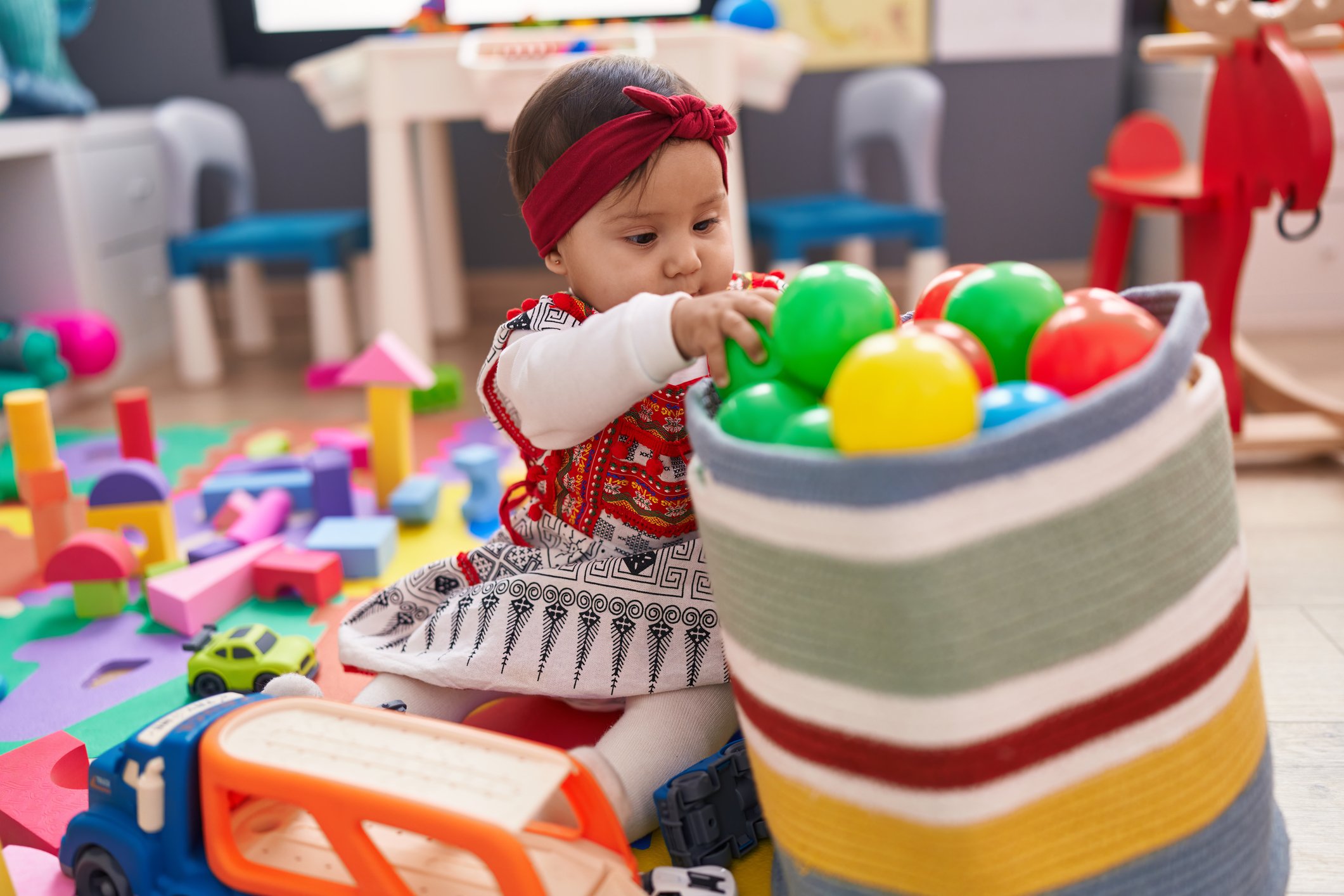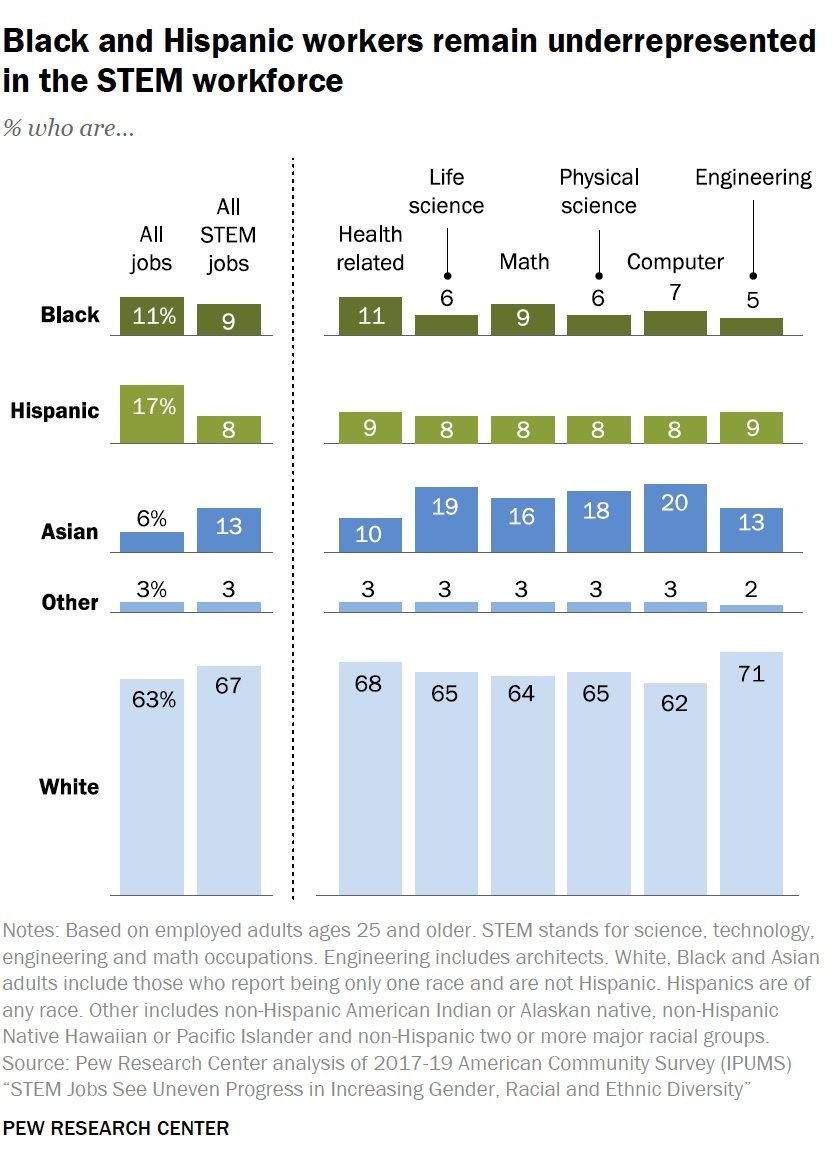WHAT IS THE Impact of Early stem exposure on Black and HISPANIC Students?
Teachers can create a more inclusive and fair educational landscape for Black and Hispanic students by implementing STEM activities that bridge differences and encourage equality. And by implementing these activities early on.
Early exposure to Science, Technology, Engineering, and Mathematics (STEM) activities lays a strong foundation for students’ interest, engagement, and success in these fields. It provides them with valuable opportunities to explore, experiment, and develop critical skills from a young age.
Early Exposure to Stem Activities
Fosters a love for learning
Enhances cognitive development
Lays the groundwork for future academic and career choices
Stimulates curiosity
Nurtures problem-solving abilities
Cultivates a positive attitude toward STEM disciplines
Early exposure to STEM provides children with age-appropriate opportunities to engage with STEM concepts and activities from an early age.
Black and Hispanic students often face disparities and barriers in accessing quality STEM education. Early exposure to STEM can be a powerful tool in addressing these disparities.
Design STEM projects that incorporate cultural elements and contexts relevant to Black and Hispanic communities. For example:
Exploring traditional agricultural practices
Studying the impact of climate change on marginalized communities
Investigating the contributions of Black and Hispanic scientists and inventors so students can connect STEM learning to their cultural heritage
Role Model Presentations
Invite Black and Hispanic STEM professionals or entrepreneurs from various fields to speak and share their journeys with students.
These role models can inspire and motivate students by demonstrating that individuals from their communities can succeed in STEM careers.
Hearing personal stories and advice can help students envision their own paths in STEM.
STEM Cultural Celebrations
Organize events or workshops that celebrate the contributions of Black and Hispanic scientists, engineers, and mathematicians.
These events can highlight the rich history, achievements, and innovations of these communities, instilling a sense of pride and motivation among students.
Field Trips and STEM Experiences
Arrange field trips to STEM-related institutions, such as museums, research centers, or universities, where students can engage in interactive exhibits.
Visit businesses where students can witness STEM applications in real-world settings.
By targeting these communities with inclusive and culturally responsive initiatives, we can empower Black and Hispanic students to overcome systemic obstacles, build confidence, and envision themselves as capable contributors to the world of STEM.
Encouraging open-ended conversations, incorporating STEM activities into daily life, and exposing children to STEM resources and experiences at home are all effective strategies for promoting early exposure to STEM.
Create a Do-It-Yourself Experiment
Conduct a simple science experiment using household items, such as creating a volcano with baking soda and vinegar or making a homemade lava lamp with baking soda, vinegar, water and food coloring.
Build Structures with Everyday Objects
Use materials like toothpicks and marshmallows or popsicle sticks and clay to build structures and encourage engineering and spatial reasoning skills
Explore Nature
Go on nature walks or have a backyard scavenger hunt to observe and identify plants, insects, and animals.
Discuss their characteristics and habitats.
Measure and Cook
Involve children in measuring ingredients and following recipes while cooking or baking.
This develops math and measurement skills.
Explore Math in Everyday Life
Look for opportunities to engage children in practical math applications, such as calculating discounts while shopping or measuring ingredients for recipes.
Conduct a Family Science Night
Plan a designated evening for the whole family to participate in science experiments, solve puzzles, or watch educational STEM videos together.
Engage in Building and Design Challenges
Encourage children to solve design challenges like building a bridge with straws.
Challenge children to construct a paper airplane that can fly the farthest.
Parents and families play a crucial role in shaping children’s interest and engagement in STEM. By actively participating in their child’s STEM exploration, parents can foster a positive mindset, provide support, and serve as advocates.
INCORPORATING EARLY EXPOSURE IN EARLY CHILDHOOD EDUCATION
Early childhood education serves as a vital starting point for introducing STEM concepts. Educators can nurture curiosity, critical thinking, and problem-solving skills by integrating STEM activities into early childhood curricula.
BUILDING WITH BLOCKS
Building activities with blocks, such as wooden or plastic blocks, help develop spatial awareness, fine motor skills, and basic engineering concepts. Encourage children to experiment with different structures, sizes, and arrangements, promoting creativity and problem-solving.
SENSORY EXPLORATION
Sensory activities allow children to explore different materials and their properties.
For example, using scoops, cups, and funnels, provide children with sensory bins filled with rice, sand, and water to help develop their understanding of volume, texture, and cause and effect.
NATURE WALK AND OBSERVATION
Take children on nature walks or set up a small garden area where they can explore plants, insects, and other natural elements.
Encourage them to observe and ask questions about the environment, fostering their curiosity and understanding of the natural world.
EASY SCIENCE EXPERIMENTS THAT WILL AMAZE KIDS
SIMPLE SCIENCE EXPERIMENTS
Conducting simple science experiments is an excellent way to introduce children to basic scientific concepts.
Activities like mixing coloring with water and food coloring, making baking soda and vinegar volcanoes, or observing the effects of ice melting can help develop their observation, prediction, and critical thinking skills.
CODING WITH UNPLUGGED ACTIVITIES
Introduce coding concepts without screens using unplugged activities.
For example, you can create a coding game where children move through a maze or follow a sequence of arrows to reach a specific destination.
This helps them understand sequencing, problem-solving, and logical thinking.
Remember to adjust the activities based on the age and developmental level of the children, ensuring they are safe and appropriate. The key is to provide hands-on, open-ended experiences that encourage exploration, questioning, and creativity.
Engaging young children in hands-on experiences, such as building structures or exploring nature, cultivates a sense of wonder and ignites their interest in STEM from an early age.
EARLY EXPOSURE IN ELEMENTARY AND MIDDLE SCHOOL
Elementary and middle schools are pivotal in providing early exposure opportunities to students. Schools can create an engaging learning environment through well-designed STEM programs and initiatives that encourage exploration and inquiry.
Implementing hands-on projects, incorporating technology, and integrating STEM activities across various subjects can stimulate interest, creativity, and a deeper understanding of STEM concepts.
Community Partnerships
Collaborate with local community organizations, businesses, or professionals to provide opportunities for Black and Hispanic students. This can involve internships, apprenticeships, or job shadowing that expose students to STEM careers and provide practical experiences and networking opportunities.
By implementing targeted early exposure STEM activities, you can empower Black and Hispanic students to see themselves as valued contributors in the STEM fields, foster their interest and enthusiasm, and promote a more diverse and inclusive STEM community.
COLLABORATIONS WITH COMMUNITY ORGANIZATIONS AND BUSINESSES
Partnerships with community organizations and businesses bring real-world context and expertise into early exposure initiatives.
Local museums, science centers, and tech companies can offer hands-on experiences, mentorship programs, and exposure to diverse STEM careers.
These collaborations broaden students’ horizons, connect their learning to practical applications, and provide valuable role models for aspiring scientists, engineers, and mathematicians.
OVERCOMING BARRIERS AND ENSURING EQUITY IN EARLY EXPOSURE
Ensuring fair access to early exposure opportunities is of utmost importance, and providing equal opportunities to all students is crucial. Addressing financial barriers is a key step toward achieving this goal.
Scholarships, fee waivers, and funding support can help level the playing field.
Additionally, cultivating culturally responsive early exposure initiatives acknowledges and celebrates the unique cultural backgrounds of students, making STEM activities relatable and meaningful for all.
CONCLUSION
Early exposure to STEM activities offers immense benefits for all students, and it holds particular significance for Black and Hispanic students who often face systemic disparities.
Ultimately, the goal is to help students gain the knowledge, desire, confidence, and preparation they need to pursue a career path in science, technology, engineering, and math.
By providing targeted initiatives, engaging parents, integrating STEM in early childhood education, and forming partnerships with community organizations and businesses, we can create a more inclusive and equitable STEM education and workforce landscape for Black and Hispanic students.








